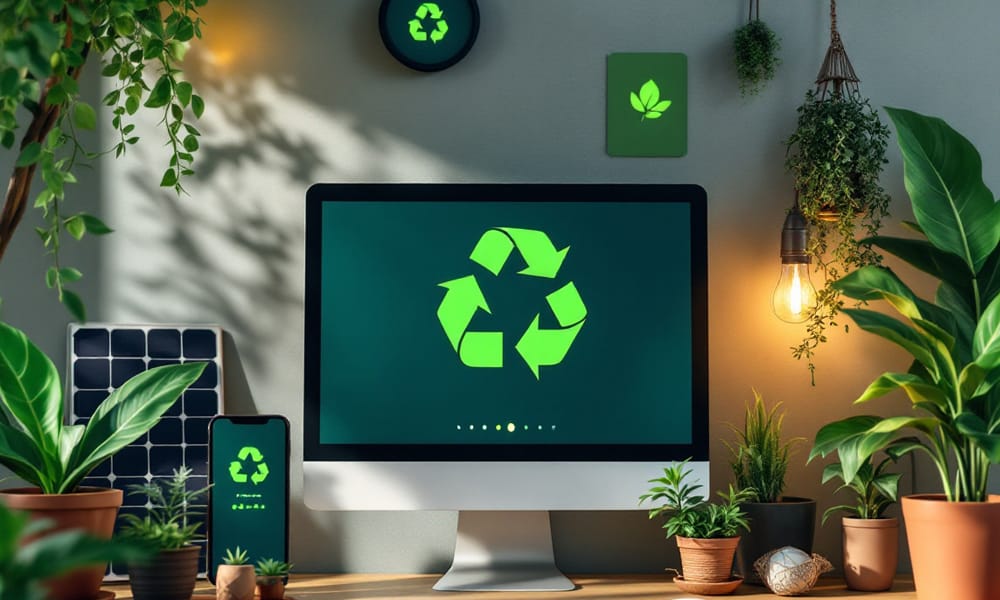Sustainable Web Design: Reducing Carbon Footprint through Efficient Coding
Did you know that the internet has a carbon footprint?
With every website you visit, image load, and video stream comes energy consumption, and that impacts our planet.
If you’re interested and passionate about sustainability and you want to reduce your carbon footprint, sustainable web design is the way to go.
It’s important to adopt efficient coding practices, optimize websites, and create digital experiences that are mindful of the environment, and also user-friendly.
Let’s explore how sustainable web design works and how to make a difference with greener coding strategies and smarter decisions.
What is sustainable web design?

This practice focuses on creating websites with minimal environmental impact. Research shows that digital technologies, unfortunately, consume 6% more energy every year.
It involves reducing the energy it takes to load and interact with a website.
With a good, energy-efficient website, you use less server power, with fewer emissions, and contribute to a greener digital ecosystem.
It’s a healthy blend of technology, creativity, and responsibility towards our planet.
Why does web design have a carbon footprint?
The internet relies on a global network of data centers, devices, and servers, and all of these consume electricity.
Research has pointed out that if we continue on this path, the IT sector will be responsible for 14% of the world’s carbon emissions by 2040.
When a website is poorly optimized, for example, featuring large images, uncompressed code, or too many plugins, it takes a lot of energy for it to load.
If you multiply this by millions of users, the environmental impact has to be considered.
With sustainable web design, you can prioritize efficiency and tackle this problem from the beginning.
5 Key Principles of Sustainable Web Design

As with many other philosophies and trends in the world, sustainable web design comes with its own set of principles. Let’s review them.
1. Optimize Website Performance
One popular way to reduce energy consumption is by optimizing performance. Use efficient code, compress images, and minimize the number of HTTP requests, as we’ve mentioned before. Faster-loading websites not only reduce emissions but also improve user satisfaction, which is always positive for the company.
2. Choose Green Hosting Providers
Hosting services can focus on sustainability as well. Green hosting providers use renewable energy in their data centers. Host your website with a sustainable provider, and lower the carbon emissions associated with your site.
3. Streamline Code
When you focus on efficient coding, you reduce file sizes and improve the speed of the website’s performance. A few techniques, like magnifying CSS, HTML, and JavaScript, can reduce importantly the energy your website uses.
4. Use Responsive Design
Responsive design can adapt without issues to a lot of different devices, and it ensures its users don’t feel like they’re waiting a long time for a page to load.
5. Limit Energy-Intensive Features
Animations, videos, and autoplay functions consume a lot of energy, as we said before, and it can take more time to load. Where possible, replace these with static images or simpler elements. Learn more about cybersecurity tools so that you can add them to your website without limiting its performance.
How to Get Started with Sustainable Web Design
The steps are very simple.
- Audit your website : Use tools like Google Lighthouse to review areas for improvement in performance and efficiency. You can also hire an expert, of course.
- Implement changes gradually : Start by optimizing high-impact elements such as images and code, and see how your website’s performance improves a lot.
- Educate your team : Share knowledge about sustainable web design principles to ensure everyone is on the same page and inform them of what goals you want to achieve.
- Monitor and improve : Regularly review your site’s performance and look for new ways to enhance sustainability. Don’t forget to update plugins and review the code from time to time to see if there are any errors.
Final thoughts
Sustainable web design isn’t just a trend; it’s a crucial goal in an increasingly digital-first world. If you optimize your website for efficiency and adopt green practices, you can reduce your carbon footprint while delivering a better user experience.
Every small change, from compressing images to choosing renewable hosting, contributes to a healthier planet. Start making your website part of the solution: every click counts.







